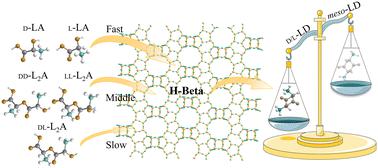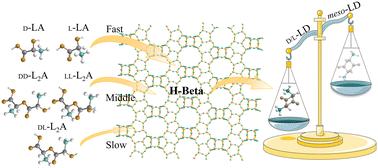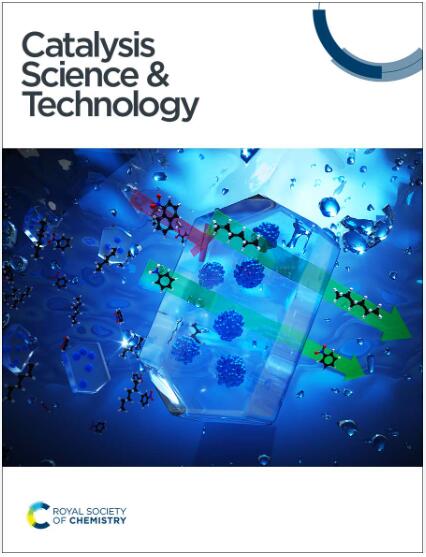利用形状选择性 H-Beta 沸石减少外消旋乳酸生成中乳酸
IF 4.4
3区 化学
Q2 CHEMISTRY, PHYSICAL
引用次数: 0
摘要
外消旋乳酸(rac-LA)经化学催化转化后用于聚乳酸(PLA)合成,但由于在转化过程中会产生副产物--不受欢迎的间位内酯(meso-LD),其利用仍然受到限制。本研究提出利用形状选择性 H-Beta 沸石在 rac-LA 向 LD 的一步催化转化过程中对不同乳酸二聚体 (L2A) 的选择性,来减少间位内酯 (LD) 的形成。不同 L2A 含量的各种 LA 溶液的实验结果表明,L2A 含量对于最大化外消旋内酯(D/L-LD)的选择性至关重要,从而证实了 H-Beta 沸石对 L2A 的形状选择性。此外,研究还发现,提高反应温度和采用具有更规整通道的结构重构 H-Beta 沸石作为催化剂,可进一步减少介质-LD 的形成,在最佳催化剂和反应条件下,D/L-LD/介质-LD 比为 2.26 时,LD 产率可达 60%。尽管在最终产物中 D/L-LD 和介质-LD 共存,但这项研究标志着在控制由化学转化产生的 rac-LA 合成的 LD 的立体异构体分布方面迈出了重要一步。本文章由计算机程序翻译,如有差异,请以英文原文为准。


Reducing meso-lactide formation from racemic lactic acid using shape-selective H-Beta zeolite†
The utilization of racemic lactic acid (rac-LA) produced via chemocatalytic conversion for polylactic acid (PLA) synthesis remains limited due to the formation of undesired mesomeric lactide (meso-LD), a by-product that arises during the conversion process. This study proposes the use of shape-selective H-Beta zeolite to reduce the formation of meso-LD in lactide (LD) by leveraging its selectivity towards different lactic dimers (L2A) in a one-step catalytic conversion of rac-LA to LD. Experimental results from various LA solutions with different L2A content indicate that the L2A content is critical for maximizing the selectivity of racemic lactide (d/l-LD), thus confirming the shape-selective nature of H-Beta zeolite towards L2A. Additionally, it is found that increasing the reaction temperature and employing structurally reconstructed H-Beta zeolite with more regularized channels as a catalyst can further decrease meso-LD formation, and a LD yield of 60% with a d/l-LD/meso-LD ratio of 2.26 can be achieved under optimal catalyst and reaction conditions. Despite the coexistence of d/l-LD and meso-LD in the final product, this study marks a significant step towards controlling the stereoisomer distribution of LD synthesized from rac-LA derived from chemical conversion.
求助全文
通过发布文献求助,成功后即可免费获取论文全文。
去求助
来源期刊

Catalysis Science & Technology
CHEMISTRY, PHYSICAL-
CiteScore
8.70
自引率
6.00%
发文量
587
审稿时长
1.5 months
期刊介绍:
A multidisciplinary journal focusing on cutting edge research across all fundamental science and technological aspects of catalysis.
Editor-in-chief: Bert Weckhuysen
Impact factor: 5.0
Time to first decision (peer reviewed only): 31 days
 求助内容:
求助内容: 应助结果提醒方式:
应助结果提醒方式:


